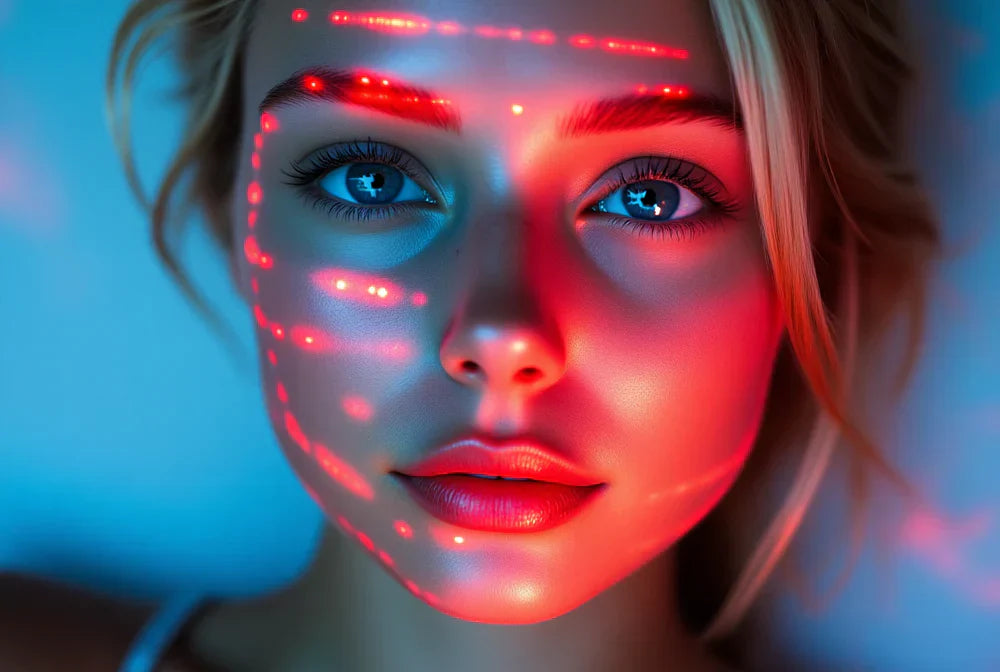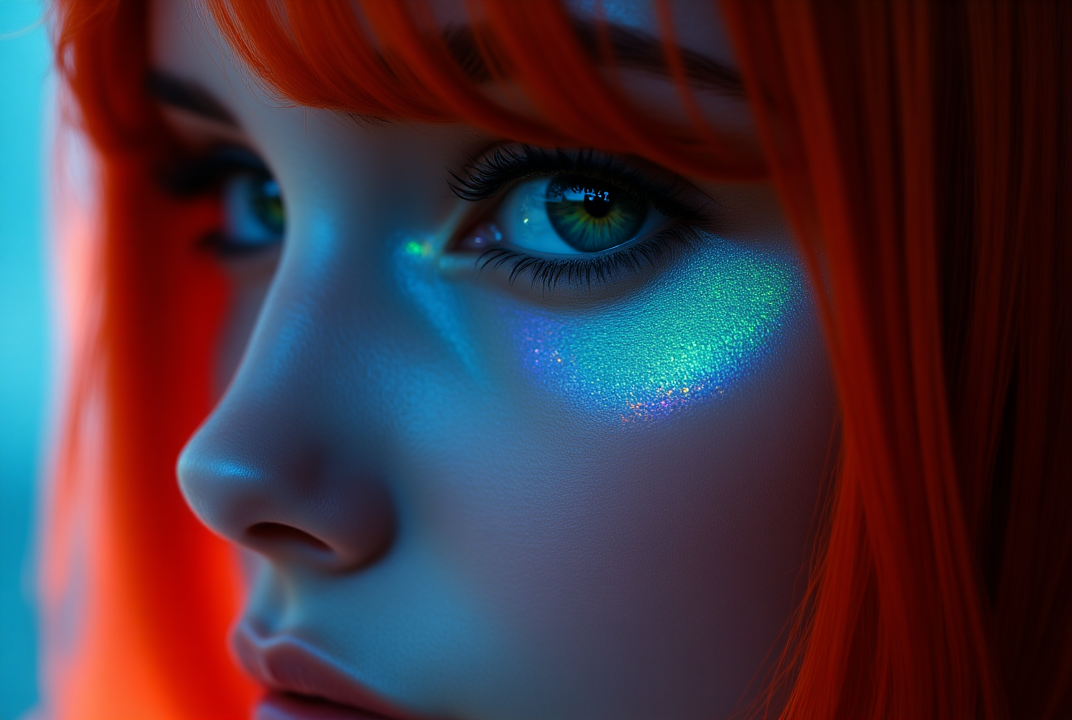Ever experienced tired, achy eyes after staring at a screen for too long? Eye strain, also known as digital eye strain or computer vision syndrome, is a common issue in today’s screen-heavy world. But how long does it last, and when should you be concerned? In this article, we’ll explore the key facts about eye strain, what affects its duration, and the best ways to prevent and relieve it.
Why Do We Get Eye Strain?
Eye strain, often experienced as discomfort or fatigue in the eyes, primarily results from prolonged exposure to digital screens, inadequate lighting, or focusing on a single task for extended periods. When we engage with screens, our blink rate decreases, leading to dry eyes and irritation. The glare from screens, poor posture, and improper viewing distances further exacerbate the strain. Furthermore aggravating our circadian rhythms and causing eye tiredness are the blue lights generated by digital gadgets. Understanding these elements helps us to develop better practices to reduce eye strain and preserve best eye condition.
How Long Does Eye Strain Last?
The duration of eye strain can vary significantly depending on the underlying causes and individual circumstances. Typically, eye strain symptoms such as dryness, irritation, and blurred vision can last from a few minutes to several hours after the cessation of the activity causing the strain. For most individuals, symptoms subside once they take a break from the screen or engage in eye-relaxing exercises. However, if the strain is due to prolonged exposure to screens without adequate breaks or poor ergonomic practices, it may persist longer and require more deliberate interventions, such as adjusting screen settings, improving lighting, or using blue light blocking glasses. Consistently practicing good eye care habits can help reduce the frequency and duration of eye strain episodes.
What Can We Do To Prevent Eye Strain?
Optimize Screen Settings and Environment
Adjusting your screen settings and environment can significantly reduce eye strain. Ensure your screen brightness matches the ambient lighting and reduce glare by positioning your screen away from direct light sources. Use an anti-glare screen protector if necessary. Maintain a comfortable viewing distance, ideally 20 to 28 inches from your eyes, and position the screen so that your eyes are level with the top of the monitor. Regularly clean your screen to remove dust and fingerprints that can cause glare.
Practice the 20-20-20 Rule
Incorporating the 20-20-20 rule into your routine can help alleviate eye strain. Every 20 minutes, take a 20-second break to look at something 20 feet away. This practice allows your eyes to refocus and reduces fatigue from prolonged screen time. Additionally, make a conscious effort to blink more frequently to keep your eyes moist and prevent dryness.
Use Blue Light Blocking Glasses
Blue light blocking glasses are an effective tool in preventing eye strain, especially for those who spend long hours in front of digital screens. These glasses help to reduce eye tiredness and disturbance of sleep patterns by filtering the dangerous blue light emitted by displays. Blue light blocking sunglasses help to lower glare, increase visual comfort, and shield your eyes from possible long-term harm. Consider using daytime glasses for work and red-lensed glasses in the evening to optimize melatonin production and support better sleep.
Take Regular Breaks and Stretch
Regular breaks and stretching exercises can help prevent eye strain and improve overall well-being. Stand up, stretch your body, and move around every hour to relieve tension and improve circulation. During these breaks, perform simple eye exercises, such as rolling your eyes or focusing on distant objects, to relax the eye muscles, reduce strain, and provide stress relief.
What Does Eye Strain Feel Like?
Eye strain manifests as a range of uncomfortable symptoms that can affect your daily activities. Common sensations include a persistent feeling of tiredness or fatigue in the eyes, accompanied by dryness, itching, or a burning sensation. You might experience blurred or double vision, making it difficult to focus on tasks, and blurry vision can further contribute to this issue. Headaches, particularly around the temples or forehead, are also frequent companions of eye strain. Additionally, individuals may notice increased sensitivity to light and difficulty concentrating, which can exacerbate the discomfort. Recognizing these symptoms is crucial for taking timely measures to alleviate eye strain and protect your vision.
Does Eye Strain Cause Tears or Watery Eyes?
Yes, eye strain can indeed cause tears or watery eyes. When your eyes are overworked, particularly from prolonged screen time or focusing on a single task for an extended period, they can become irritated and fatigued. This irritation often triggers the lacrimal glands to produce excess tears as a protective response to soothe and lubricate the eyes. Ironically, while eye strain can lead to dryness due to reduced blinking, the subsequent irritation can result in watery eyes as the body attempts to compensate for the dryness. Understanding this response can help in adopting preventive measures, such as taking regular breaks and ensuring proper screen ergonomics, to maintain eye comfort and health.
What Factors Influence How Long Eye Strain Lasts?
Several elements affect the length and intensity of screen exposure, individual eye health, and ergonomic settings, therefore determining the degree of eye strain. Prolonged periods of focusing on digital screens without adequate breaks can exacerbate symptoms, making them last longer. How quickly one heals from eye strain also depends much on personal characteristics including age, current vision difficulties, and general eye condition. Additionally, environmental conditions like poor lighting, screen glare, and improper viewing distances can intensify strain and prolong discomfort. Implementing preventive measures, such as using blue light blocking glasses, optimizing screen settings, and practicing good ergonomic habits, can help reduce the duration and severity of eye strain.
Eye Strain Key Facts
- Prevalence Among Digital Device Users: Eye strain is a common issue affecting individuals who spend extensive hours on digital devices, including office workers, gamers, and students. The constant focus on screens can lead to discomfort and fatigue in the eyes.
- Symptoms and Duration: Typical symptoms of eye strain include dryness, irritation, blurred vision, and headaches. These symptoms can last from a few minutes to several hours, depending on the duration and intensity of screen exposure.
- Role of Blue Light: Exposure to blue light from screens can exacerbate eye strain by disrupting sleep patterns and causing additional fatigue. Blue light blocking glasses can help filter out harmful blue light, reducing glare and improving visual comfort during extended screen time.
- Preventive Measures: Practicing the 20-20-20 rule, optimizing screen settings, and ensuring proper lighting can significantly reduce the risk of eye strain. Regular breaks and eye exercises also contribute to maintaining eye health.
- Importance of Ergonomics: Proper screen ergonomics, such as maintaining an appropriate distance from the screen and adjusting the monitor height, play a crucial role in preventing eye strain. Ensuring a comfortable and well-lit workspace can further alleviate symptoms of visual discomfort.
Conclusion
In conclusion, understanding and addressing eye strain is essential in our increasingly digital world. By recognizing the symptoms and factors that contribute to eye strain, individuals can take proactive steps to protect their vision and enhance their overall well-being. Implementing strategies such as optimizing screen settings, practicing the 20-20-20 rule, and using blue light blocking glasses can significantly reduce discomfort and prevent long-term damage. As we continue to rely on digital devices for work, study, and leisure, prioritizing eye health through mindful habits and ergonomic practices will ensure that our digital interactions remain both productive and comfortable.
Final Thoughts
Are you looking for effective ways to combat eye strain in your digital lifestyle? Explore EMR-TEK, where innovative products are designed to fit seamlessly into your daily routine. Whether you require a portable device for convenience on the go or a comprehensive system for home or professional use, EMR-TEK offers the ideal solution. Their expertly crafted blue light glasses are crucial for minimizing eye strain and safeguarding your vision. Additionally, discover their selection of red light therapy products to begin your journey toward healthier, more radiant skin today.
Sources
- https://www.brownhealth.org/be-well/digital-eye-strain-blue-light-and-tips-how-relieve-your-eyes
- https://www.aoa.org/healthy-eyes/eye-and-vision-conditions/computer-vision-syndrome?sso=y
- https://www.eyephysiciansoflongbeach.com/uncategorized/what-are-the-effects-of-screen-time-on-your-eyes/
Disclaimer:* EMR-TEK’s red infrared light therapy devices, blue light blocking glasses, and other products are intended solely for personal wellness and fitness use. They are not designed to diagnose, treat, cure, or prevent any disease and should not be considered medical devices. We do not make any therapeutic claims. Our products align with the FDA’s “General Wellness: Policy on Low Risk Devices” guidelines and do not require FDA clearance. Please note, EMR-TEK’s products are for personal use only and not for commercial application.*




Share:
What Color Light Is Best For Sleep: Sleep Quality Tips
Screen Protector vs Blue Light Blocking Glasses: What’s The Difference?